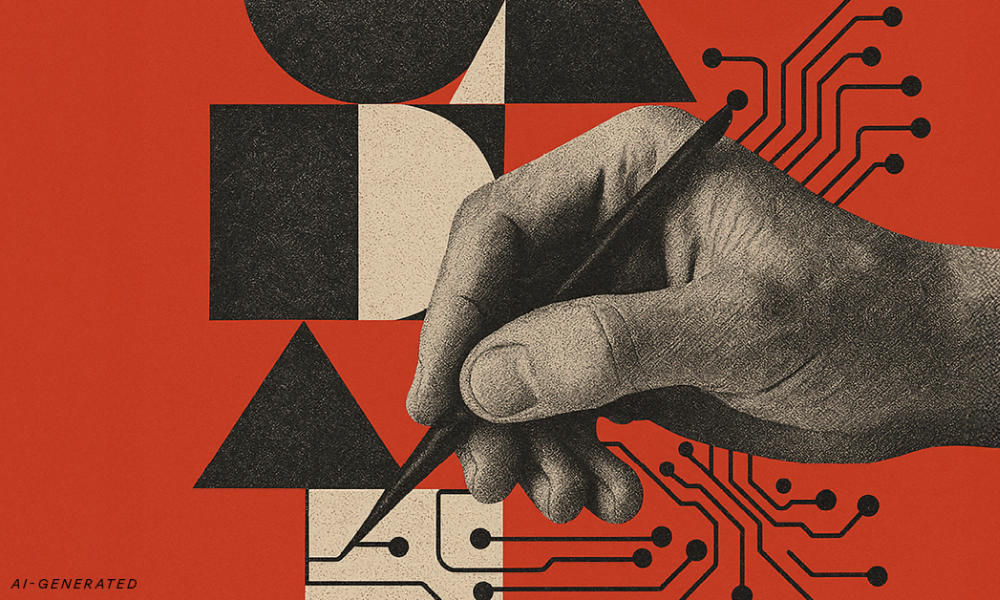By: Kaare Wesnaes, Head of Innovation for Ogilvy North America
When the potential of Artificial Intelligence in the creative industry was emerging, everyone said: “This will change everything.” Soon after, that proclamation turned into a pervasive question: “Will AI replace human creativity?” We were right to marvel at AI’s impact, but turns out there’s a more consequential – and let’s be honest, more interesting – question on the other end: “What happens when creativity learns to move at the speed of AI?” Because AI isn’t here to replace human creativity. It’s here to rewire it.
The age of AI begets a new age of creativity – let’s call it augmented creativity. Because AI only results in impactful outputs when it has critical inputs. And critical thought is a uniquely human skill.
In other words, it’s essential that humans lead the way with a deep and dynamic understanding of their audience, the brand, and the ultimate (tangible) goals trying to be achieved – and then convey that information with clarity and direction.
AI resources like LLMs and tools like WPP’s proprietary platform, WPP Open, aren’t here to do the thinking for us. They’re here to sharpen our instincts and stretch our ideas beyond what we could do alone. The real gain isn’t just efficiency — it’s momentum.
Take our IBM campaign, Fishy.AI. We used Adobe Firefly to bring brand-safe goldfish characters to life — adorable and instantly ownable. But it wasn’t the tool that made it work. It was the intent behind the input. We shaped the tone. We made sure the fish said something only IBM could say. The result? 600+ million impressions and a new benchmark for how brands can use AI without losing their voice.
Or take the synthetic focus groups we’re building with AI agents — virtual personas modeled on real consumers, brand experts, and cultural pulse-checkers. These agents let us simulate global reactions to creative work, testing for cultural relevance, acquisition potential, and brand alignment. We’ve used them across industries — from beverages and entertainment to finance and retail — to refine strategy and pressure-test ideas with speed and precision.
And AI isn’t just guiding creative or strategic execution — it’s also helping us reframe how we interpret insights in the first place. Instead of settling for surface-level takeaways, we use AI to challenge assumptions, uncover latent opportunities in existing data, and shift perspective on persistent business challenges. It helps teams break out of confirmation bias and move from “What happened?” to “What now?”
As AI continues to evolve, agentic AI will transform how we think, create, and realize work — giving us smarter, more intuitive partners that not only generate ideas but help us decide which ones to move forward with, faster and more confidently.
We’re also driving innovation in brand world development for a leading CPG brand, where we’re building one of the first AI-generated creative platforms. By leveraging WPP Open, we’re bringing the brand’s new animated world to life — generating images, refining scripts, and producing videos all within the platform. This enables every market, even those with limited budgets, to activate bespoke, locally relevant content with efficiency and scale.
AI is becoming embedded in how we both think and make. It’s not a tool we use occasionally. It’s a collaborator we rely on to move faster, test ideas expansively, and create sharper solutions.
The key? We never treat the machine as the magician.
AI isn’t replacing the ability to be creative, it’s reshaping the conditions around the creative process. As we look ahead, this landscape will only get more fluid. New models like Google Veo 3 — now integrated into WPP Open — don’t just generate video, they bring writing back into the center of the process, letting us layer tone, emotion, camera movement, and even sound design into AI-generated scenes. These new tools are flipping the production pyramid. Writers become directors. Strategists shape stories. Imagination moves at the speed of a prompt, unlocking possibility for everyone at every stage of the process.
Which is perhaps the biggest lesson: If you’re not using AI to change how you create, you’re falling behind. And in our business, that’s the beginning of the end.
This moment isn’t just about doing things more quickly and with fewer resources. It’s about embracing evolution. Forcing ourselves to be braver and more expansive in how we think.
That’s always been the role of technology: to inspire us, challenge us, and occasionally surprise us — but never fully replace us.
As David Ogilvy once said, “Encourage innovation. Change is our lifeblood, stagnation our death knell.”
AI isn’t the threat. Our resistance to it is.
Taken from: Ogilvy





